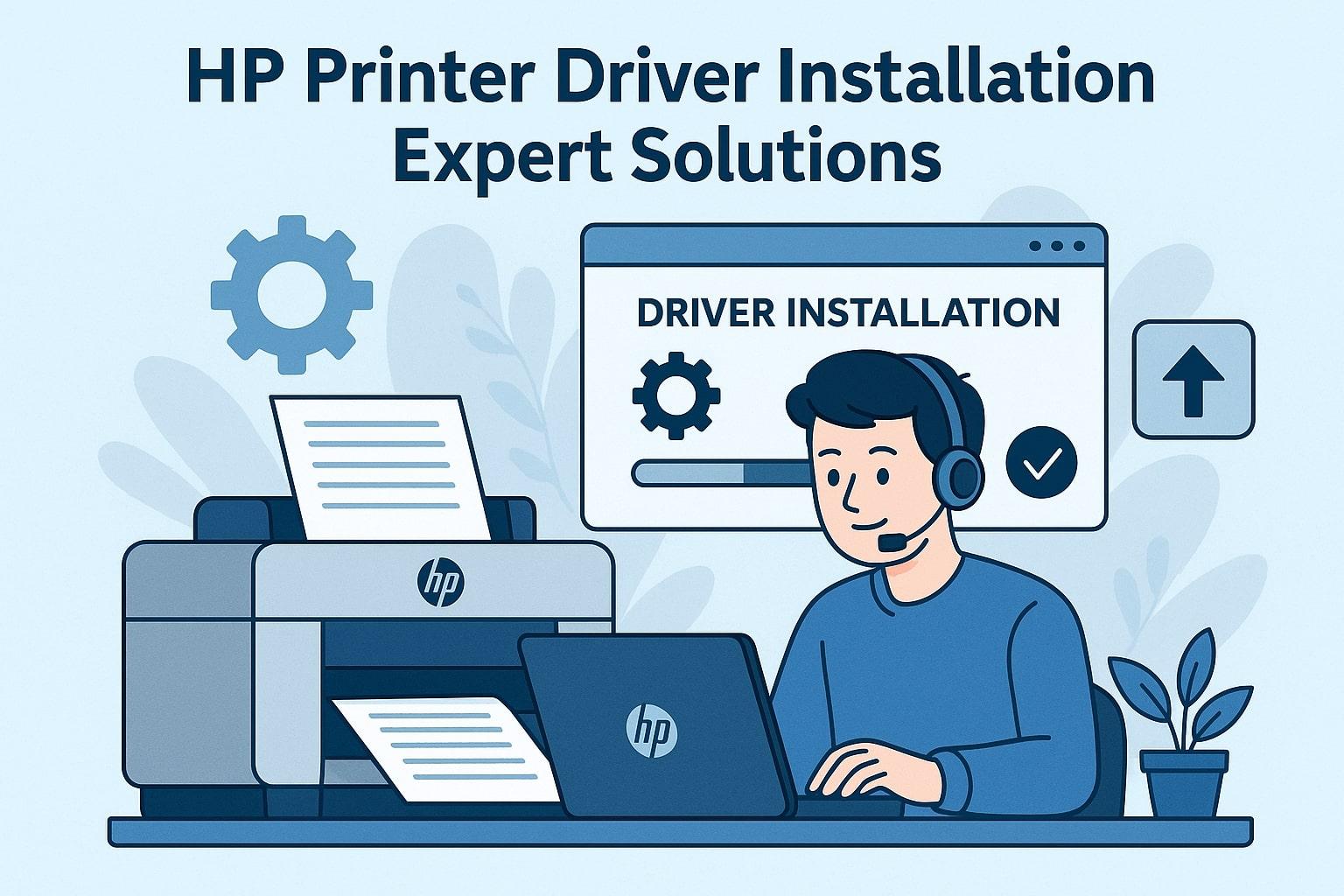In today’s fast-paced digital world, having a functional printer is essential for both home and office use. One of the most crucial steps in ensuring your HP printer works efficiently is the HP Printer Driver Installation. Without the correct drivers, your printer cannot communicate with your computer, leading to issues such as failed print jobs, errors, or unrecognized devices. In this guide, we’ll provide expert solutions to make your installation process smooth and hassle-free.
Understanding HP Printer Drivers
HP printer drivers are software programs that act as a bridge between your computer and printer. They translate the data from your computer into a language your printer understands. Each HP printer model may require a specific driver version, so it’s vital to download and install the correct one. Using outdated or incorrect drivers can result in errors like printer offline status or paper jams.
Pre-Installation Checklist
Before you begin installing your HP printer driver, make sure to:
-
Check Compatibility: Ensure your operating system supports your HP printer model. Whether you are using Windows, macOS, or Linux, HP provides drivers for all major platforms.
-
Stable Internet Connection: Downloading drivers from the official HP website requires a reliable internet connection.
-
Printer Connection: Connect your printer to your computer via USB or ensure it’s on the same Wi-Fi network if it’s a wireless model.
-
Remove Previous Drivers: If you have previously installed drivers for another HP printer, remove them to prevent conflicts.
Steps for HP Printer Driver Installation
Follow these expert steps to install your HP printer driver effectively:
Step 1: Download the Correct Driver
Visit the official HP support website and navigate to the “Drivers & Downloads” section. Enter your printer model and operating system to find the appropriate driver. Always download the latest version for the best performance.
Step 2: Install the Driver
-
Locate the downloaded file and double-click it to begin installation.
-
Follow the on-screen prompts to install the driver. This may include accepting the license agreement and choosing an installation type (typical or custom).
-
For network printers, select “Wireless” or “Network” installation and follow the instructions to connect your printer to the network.
Step 3: Configure Your Printer
After installation, your computer may prompt you to print a test page. This ensures that your printer is correctly set up and ready to use. Additionally, explore the printer settings to optimize print quality and manage preferences such as duplex printing or paper size.
Common Issues During Installation
Even with the right driver, you might encounter some problems. Here are common issues and their expert solutions:
1. Printer Not Detected
-
Solution: Ensure the printer is powered on and connected via USB or Wi-Fi. Restart both the printer and computer to refresh connections.
2. Installation Errors
-
Solution: Temporarily disable antivirus software during installation, as it may block driver files. Also, ensure that your user account has administrative privileges.
3. Printer Offline
-
Solution: Check your printer’s network settings and make sure it’s connected to the same network as your computer. In Windows, navigate to “Devices and Printers,” right-click your printer, and select “Set as Default Printer.”
4. Outdated Drivers
-
Solution: Regularly visit the HP support website to check for driver updates. Installing the latest drivers ensures compatibility with new operating system updates.
Tips for Smooth HP Printer Driver Management
-
Automatic Updates: Enable automatic driver updates to ensure your printer always uses the latest software.
-
HP Smart App: Use the HP Smart app to manage your printer remotely, check ink levels, and receive notifications for driver updates.
-
Backup Drivers: Keep a copy of your printer drivers on an external drive for quick reinstallation if needed.
Wireless Printer Installation
For wireless HP printers, the installation process involves connecting to Wi-Fi:
-
Press the wireless button on your printer to enable Wi-Fi mode.
-
On your computer, search for available printers and select your HP model.
-
Follow the on-screen instructions to complete installation.
Wireless installation allows multiple devices to print without physical connections, making it ideal for homes and offices with multiple users.
Conclusion
Proper HP Printer Driver Installation is essential for optimal printer performance. By following expert steps, maintaining updated drivers, and troubleshooting common issues, you can ensure a smooth and efficient printing experience. Remember, if you encounter persistent problems that cannot be resolved through standard troubleshooting, contacting the official Printer Support Number can provide professional assistance and ensure your printer functions flawlessly.

